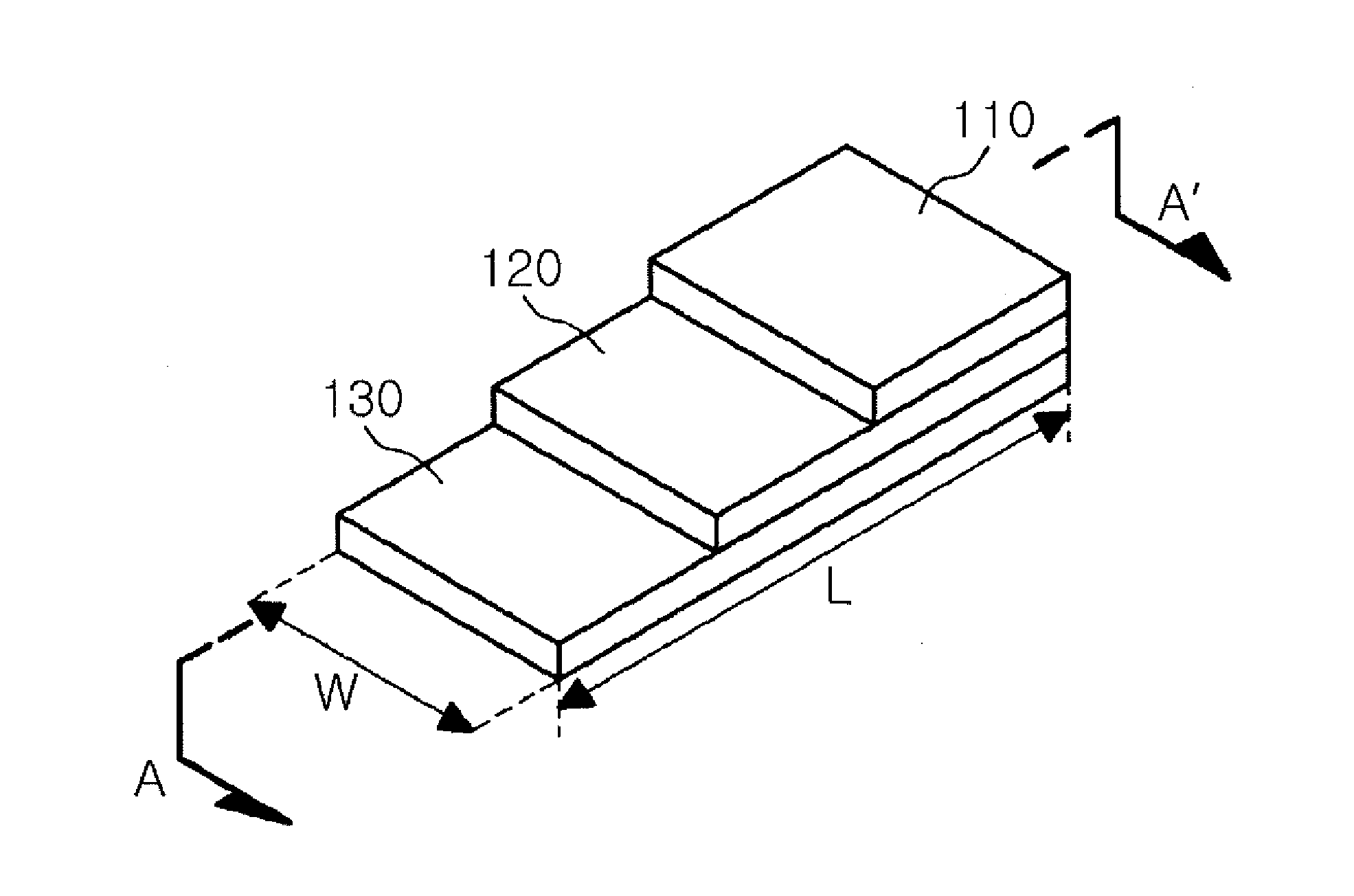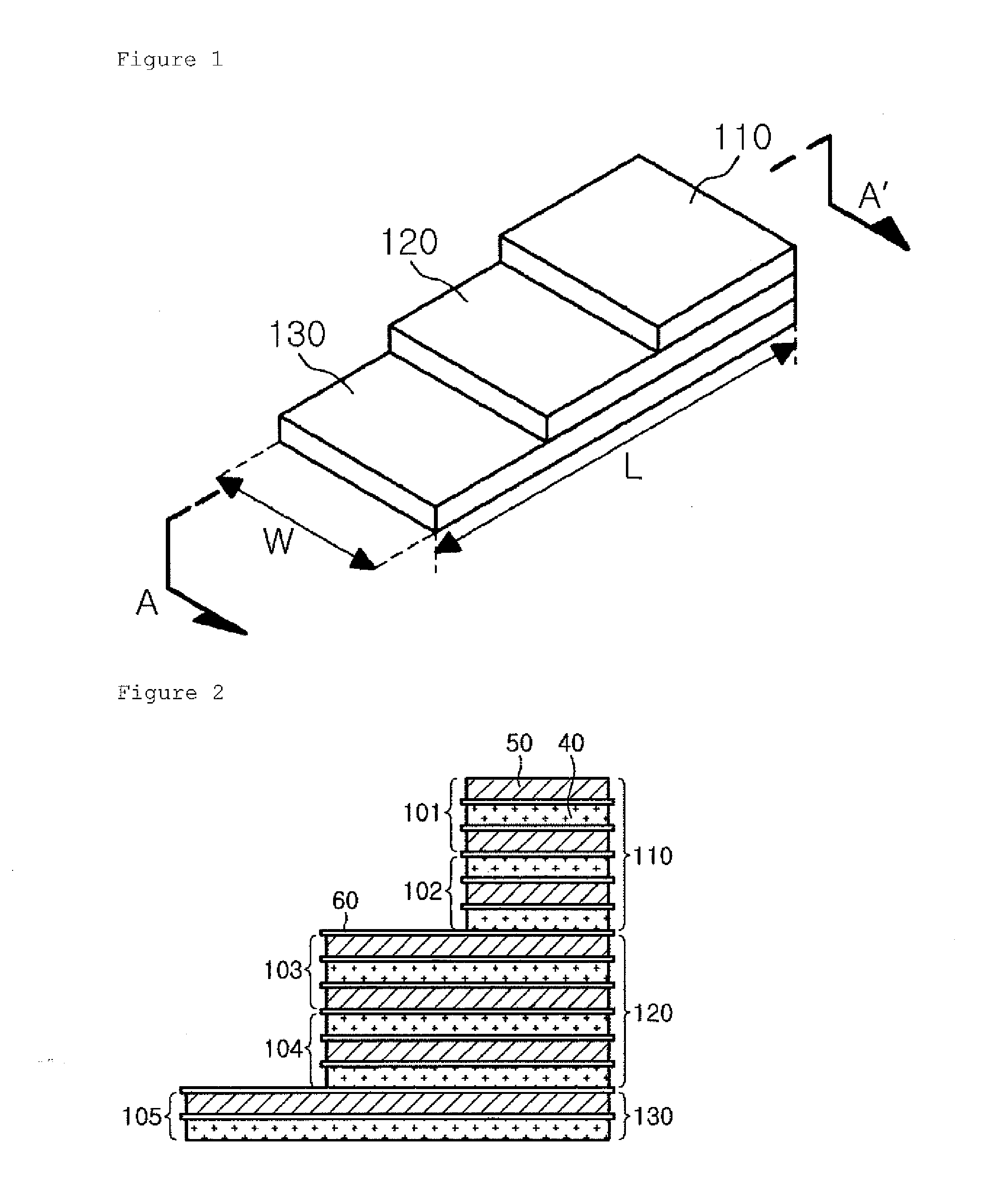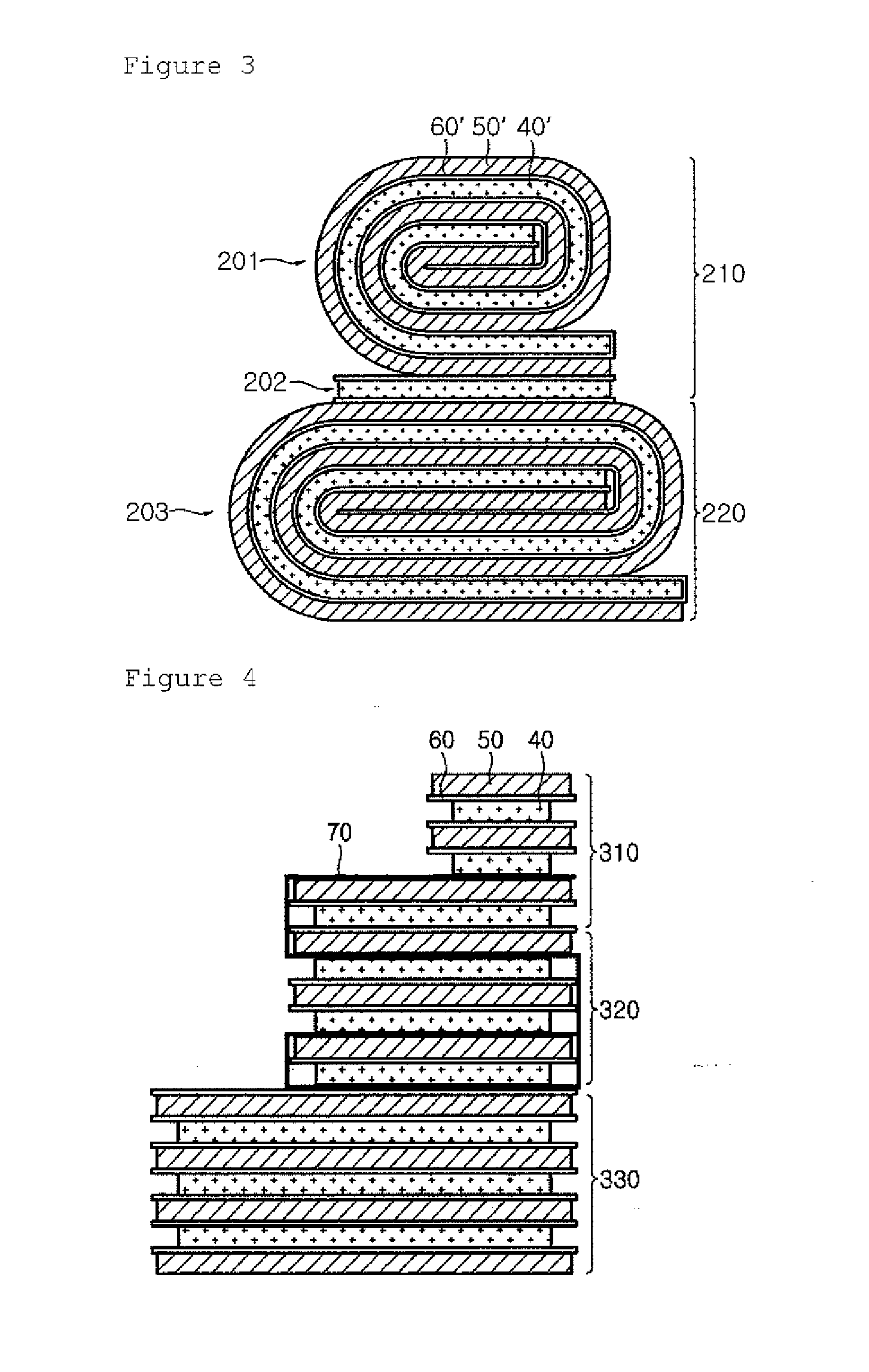Electrode assembly including electrode units having the same width and different lengths, and battery cell and device including the electrode assembly
a technology of electrode assembly and electrode unit, which is applied in the direction of wound/folded electrode electrode, battery cell, cell components, etc., can solve the problems of many limitations in battery design, limited shape, and low degree of design freedom of batteries, so as to maintain the capacity and durability characteristics of the electrode assembly, reduce dead space, and improve the degree of design freedom of the electrode assembly
- Summary
- Abstract
- Description
- Claims
- Application Information
AI Technical Summary
Benefits of technology
Problems solved by technology
Method used
Image
Examples
manufacturing example 1
Positive Electrode (A)
[0145]LiCoO2 used as a positive electrode active material, and polyvinylidene fluoride (PVDF) used as a binder were mixed and dissolved in N-Methyl-2-Pyrrolidone (NMP) to prepare positive electrode paste. The positive electrode paste was applied to both sides of an aluminum foil collector and was dried in an oven at 150° C. Then, collector coated with the positive electrode paste was pressed to form a positive electrode (A). The positive electrode (A) had a thickness of 100 μm, a porosity of 21%, and reversible capacity of 335 mAh.
manufacturing example 2
Positive Electrode (B)
[0146]A positive electrode (B) was manufactured in the same manner as in Manufacturing Example 1 except that the positive electrode (B) had a thickness of 110 μm. The positive electrode (B) had a thickness of 110 μm, a porosity of 21%, and reversible capacity of 375 mAh.
manufacturing example 3
Negative Electrode (A)
[0147]A blend of Natural graphite and artificial graphite was used as a negative electrode active material, and Styrene-Butadiene Rubber (SBR) and Carboxymethyl Cellulose (CMC) were used as a binder. The negative electrode active material and the binder were mixed and dissolved in distilled water to prepare a negative electrode paste. The negative electrode paste was applied to both sides of a copper foil collector and was dried in an oven at 100° C. Then, collector coated with the negative electrode paste was pressed to form a negative electrode (A). The negative electrode (A) had a thickness of 105 μm, a porosity of 27%, and reversible capacity of 348 mAh.
PUM
| Property | Measurement | Unit |
|---|---|---|
| voltage | aaaaa | aaaaa |
| voltage | aaaaa | aaaaa |
| voltage | aaaaa | aaaaa |
Abstract
Description
Claims
Application Information
 Login to View More
Login to View More - R&D
- Intellectual Property
- Life Sciences
- Materials
- Tech Scout
- Unparalleled Data Quality
- Higher Quality Content
- 60% Fewer Hallucinations
Browse by: Latest US Patents, China's latest patents, Technical Efficacy Thesaurus, Application Domain, Technology Topic, Popular Technical Reports.
© 2025 PatSnap. All rights reserved.Legal|Privacy policy|Modern Slavery Act Transparency Statement|Sitemap|About US| Contact US: help@patsnap.com



